Paper & Packaging Report

Executive Summary
- The paper and packaging sector has seen more than 2,000 M&A transactions since 2007.
- Revenue growth, margin expansion, and free cash flow generation will increasingly create value.
- The repeatable playbook includes a leading cost position, M&A opportunities, and a profitable portfolio mix combined with a loyal customer base.
This article is part of Bain’s 2023 Paper & Packaging Report
The paper and packaging sector has had two times more M&A deals relative to its size than the broader manufacturing industry over the past decade. This flurry of M&A activity comes both from strategic paper and packaging investors who are filling gaps in their portfolios as well as external private equity (PE) players that are creating standalone value with new acquisitions.
Historically, significant value created by paper and packaging industry PE investments has been through multiple expansion—that is, companies selling off companies at a much higher multiple than they purchased them—driven by an overall booming valuation market (see Figure 1).
We are now, however, amid a transformational shift in which multiple expansion can no longer be taken for granted. Going forward, value will increasingly be created through the fundamentals of revenue growth and especially margin expansion, as well as free cash flow generation.
Given this trend, leading companies are using an investor lens to examine themselves from the outside both in terms of value creation but also in regard to M&A opportunities. This perspective helps companies understand potential attractiveness for full or partial take-private opportunities as well as any potential exposure to unwanted approaches. Further, taking a PE growth investor lens on their business can help companies unlock full potential regardless of any third-party investor activity.
The fundamentals of revenue growth and margin expansion will increasingly generate value
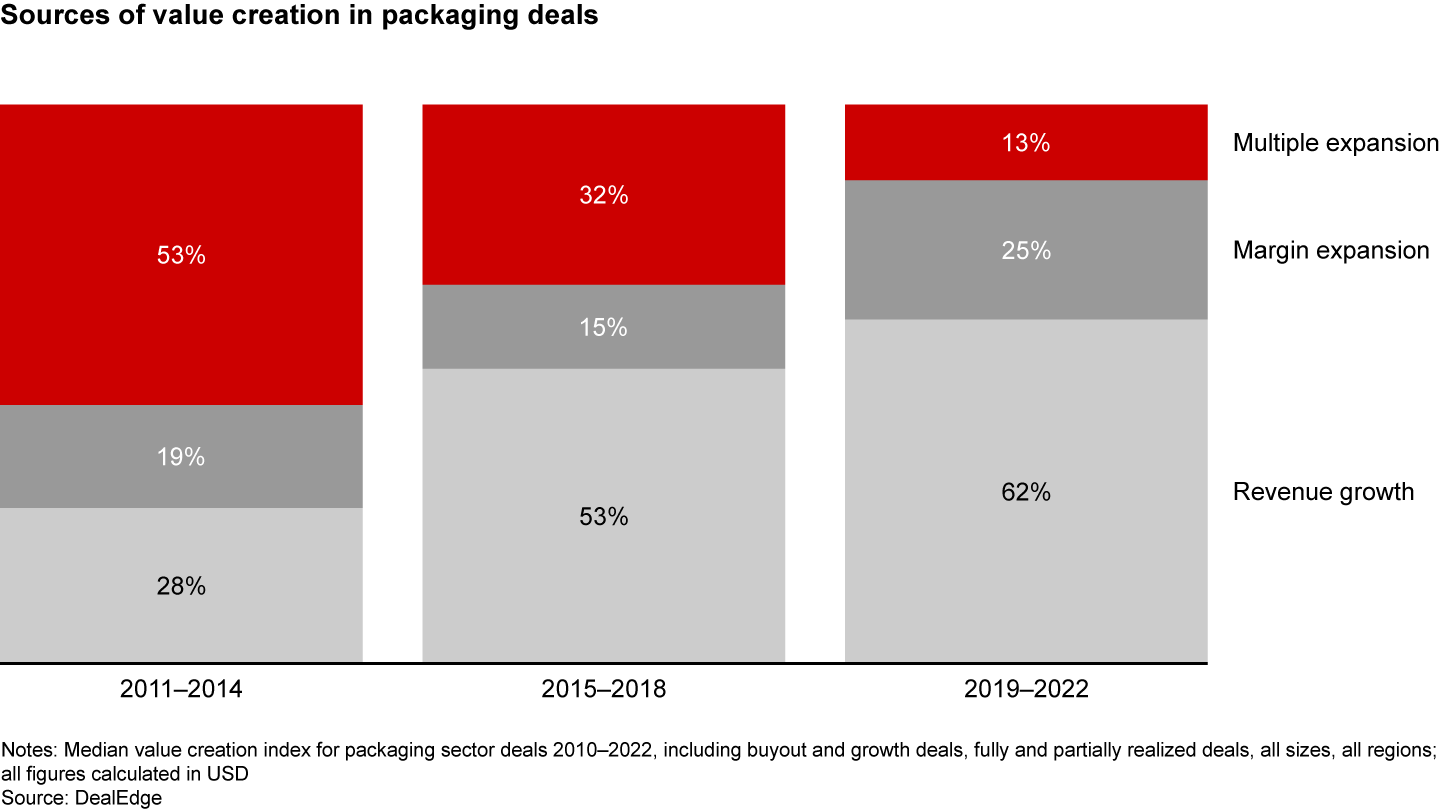
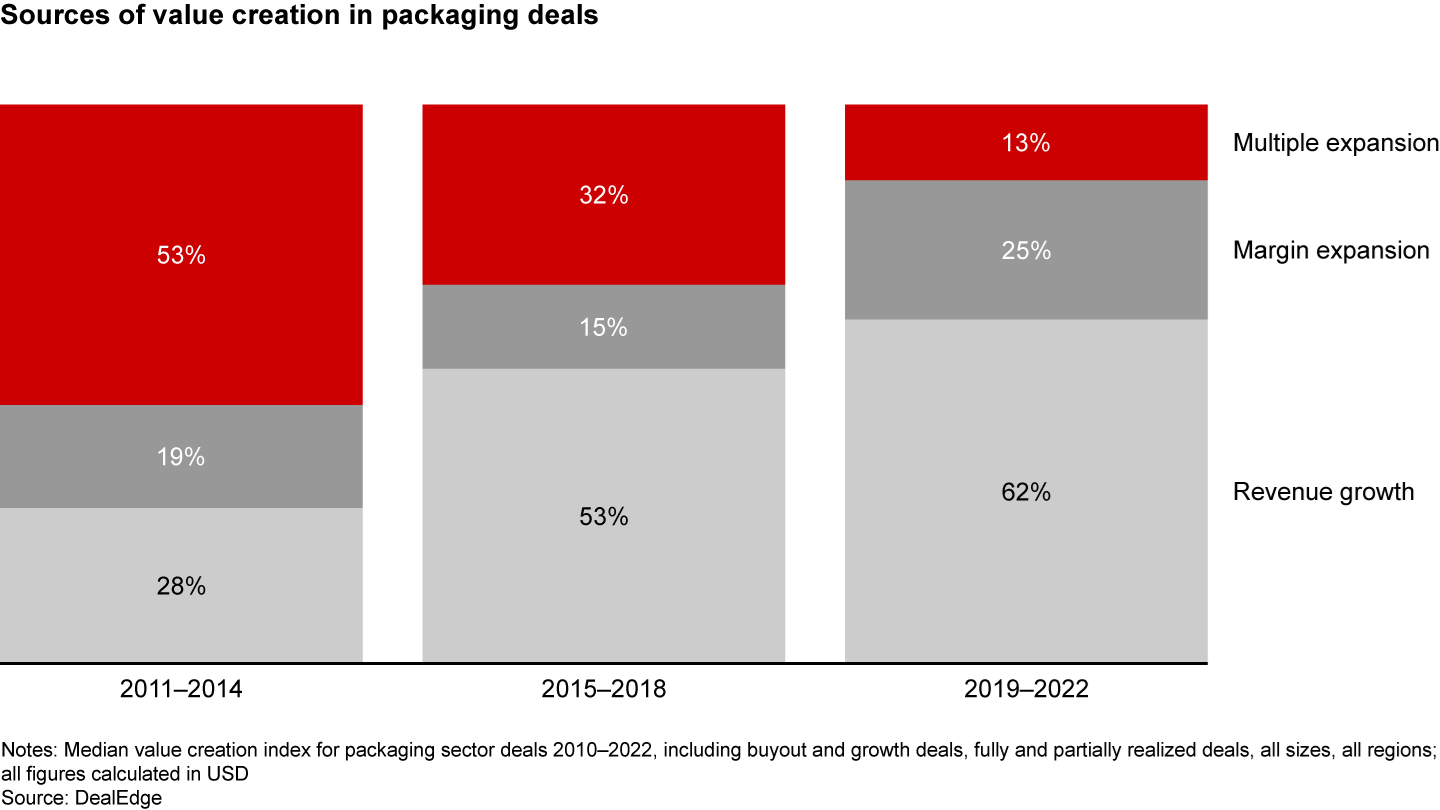
Resilient end markets and high M&A activity
The paper and packaging sector has seen more than 2,000 transactions since 2007. And of those, 84 were greater than $1 billion and 11 greater than $5 billion. The multiple on invested capital has historically been highest in the US, approximately 2.2 times that in Europe and 1.5 times that in Asia-Pacific over the past 10 years. By substrate, paper-related deals have been the most profitable vs. plastic and glass (see Figure 2).
Median packaging, paper products, and forestry deal multiples on invested capital by subindustry
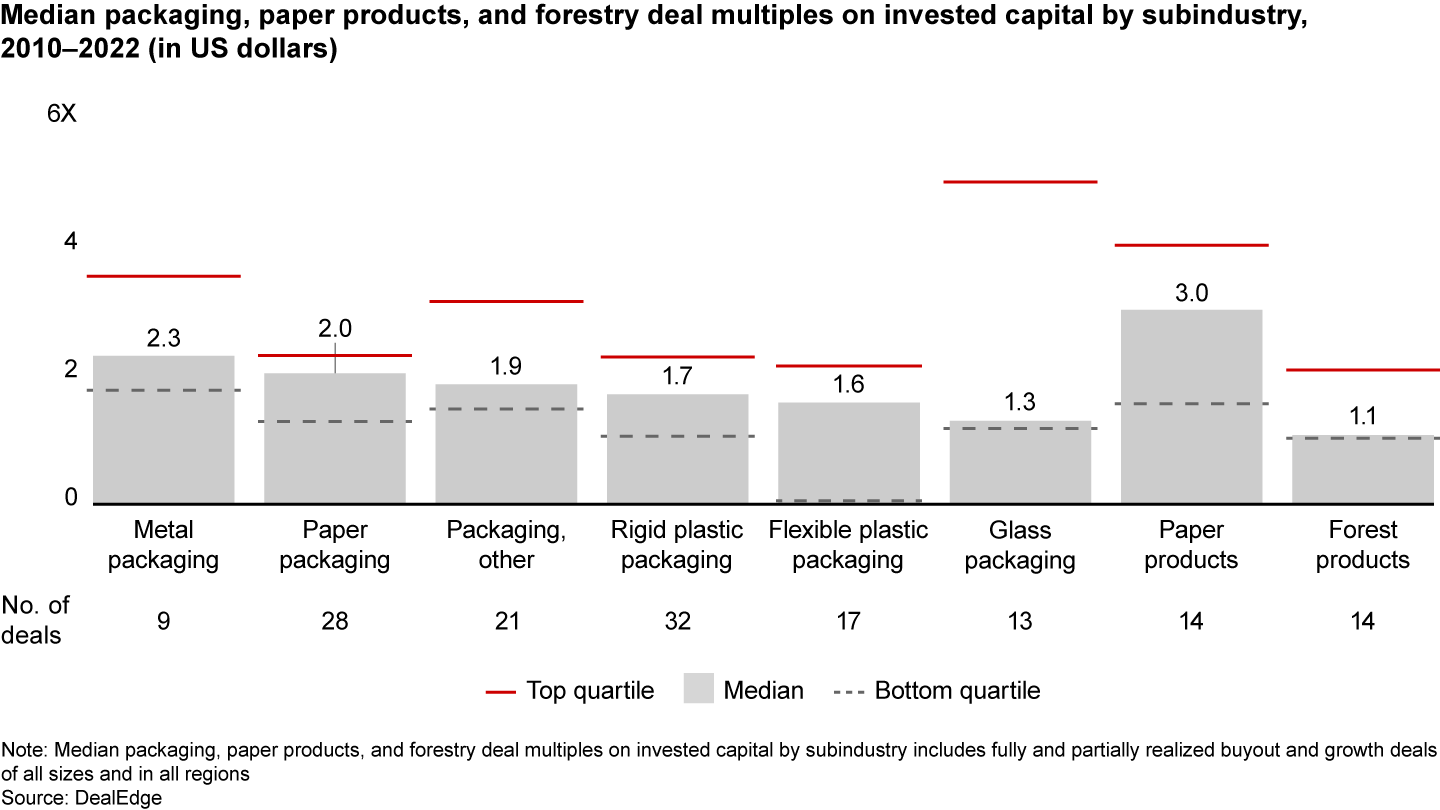
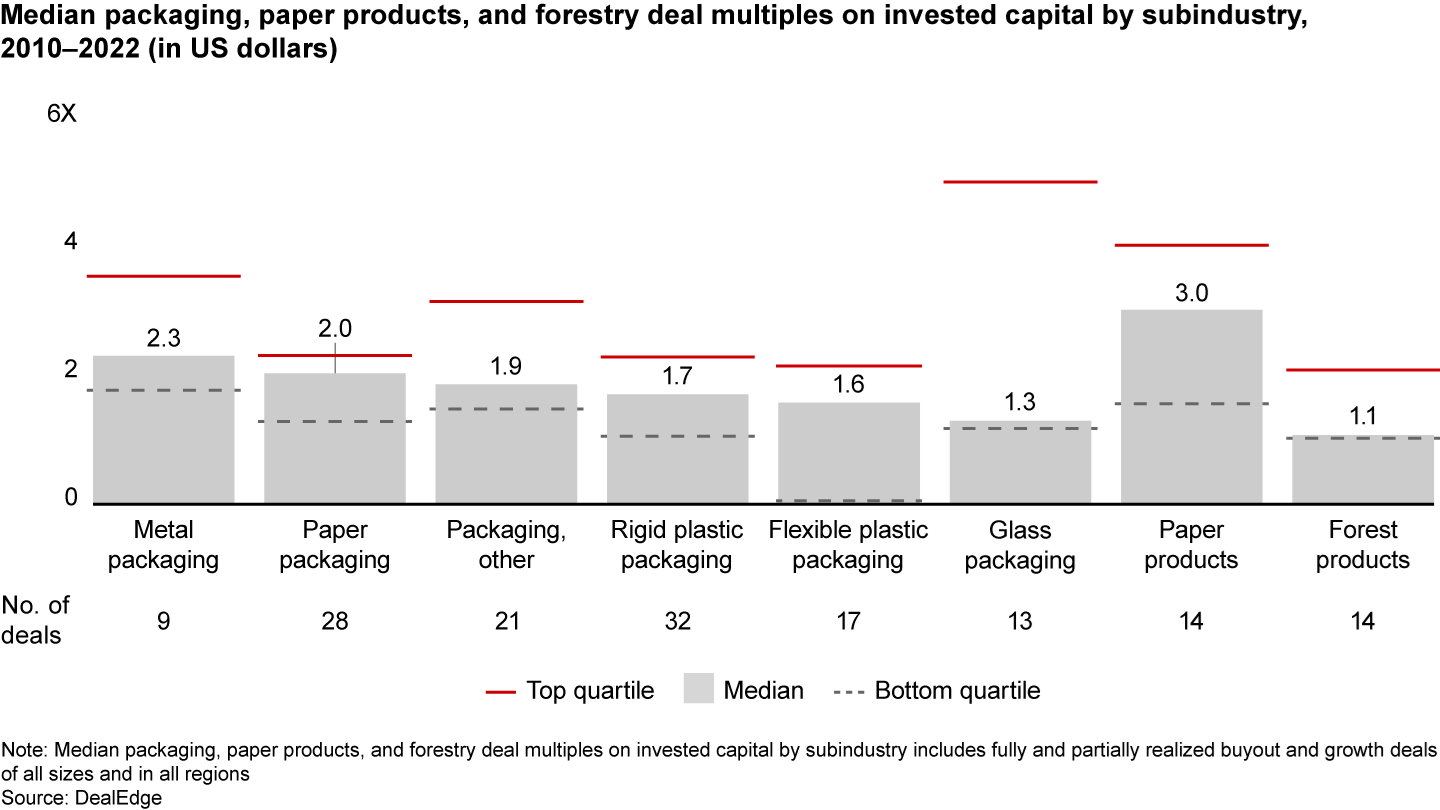
The flurry of M&A activity has been enabled by important end markets such as packaged food, home care, and pharma, which have been resilient in down cycles and have even shown consistent positive growth rates through the global financial crisis of 2008–2009 and 2020’s Covid-19 pandemic-related crash. This resilience has in turn spurred more M&A activity and private equity interest. While end-market resilience will remain a key attraction to invest in packaging going forward, it also requires investors to become much more activist to create value through margin expansion and revenue growth (as multiple expansion is no longer a given).
Margin expansion
Historically, this lever has had the least impact, but it will become increasingly more important going forward. First, a culture of continuous improvement is required to offset headwinds such as inflation, and then it is possible to expand margins. Key elements in top-line margin expansion include value-based pricing (including pass-through pricing), innovation, and optimizing the product mix. Leading companies will also achieve bottom-line excellence in areas such as procurement and operations by using the right assets for the right products and reducing the downtime of machines.
Revenue growth
Significant value will also be created through revenue growth, especially through M&A as companies buy and build—namely, buying smaller companies, improving their performance, and gaining market share. Among the capabilities that leaders are looking to acquire are sustainability and consumer packaged goods innovation, which would allow them to differentiate from competitors and gain share in markets that are otherwise moving slowly.
The packaging market is still very fragmented across many regions, offering plentiful M&A opportunities going forward. Small to midsized players create room to consolidate and achieve leading scale positions in major markets or attractive niches. The maturity level of the M&A market is different by substrate. Metal and glass, for instance, are reasonably consolidated, whereas plastic is midway in industry consolidation. Paper packaging, such as folding cartons, perhaps offers the biggest opportunity as it is still relatively unconsolidated.
Strategic investors inside paper and packaging are pursuing different types of M&A strategies depending on their goals. Those looking to increase revenue and market share in existing business or enter new geographies are seeking pure play scale deals.
Scope deals will also only continue to grow in importance as companies use acquisitions to enter new businesses or build up a new technology capability. Faerch acquired Paccor in 2022, for example, allowing the company to enter the dairy packaging market and leverage its joint innovation and recycling technologies for circular food packaging. Companies such as Mayr-Melnhof, a producer of carton board and folding cartons, also do scope deals to integrate down the value chain. Mayr-Melnhof acquired Essentra’s packaging business in 2022 to bolster its position in resilient downstream markets such as pharma secondary packaging.
These days hybrid deals that combine scale and scope are also gaining popularity (see Figure 3). Since many scale deals come with an element of scope, few targets are pure plays. While hybrid deals add complexity in the first instance, they also provide an opportunity to enter attractive adjacent areas. Graham Packaging, historically focused on beverage containers, acquired Liquid Container, which was heavily focused on food packaging, to get access to new customer relationships and technologies.
Scope deals experienced a peak before the Covid-19 pandemic; since then, scale deals (pure or hybrid) appear to be regaining share
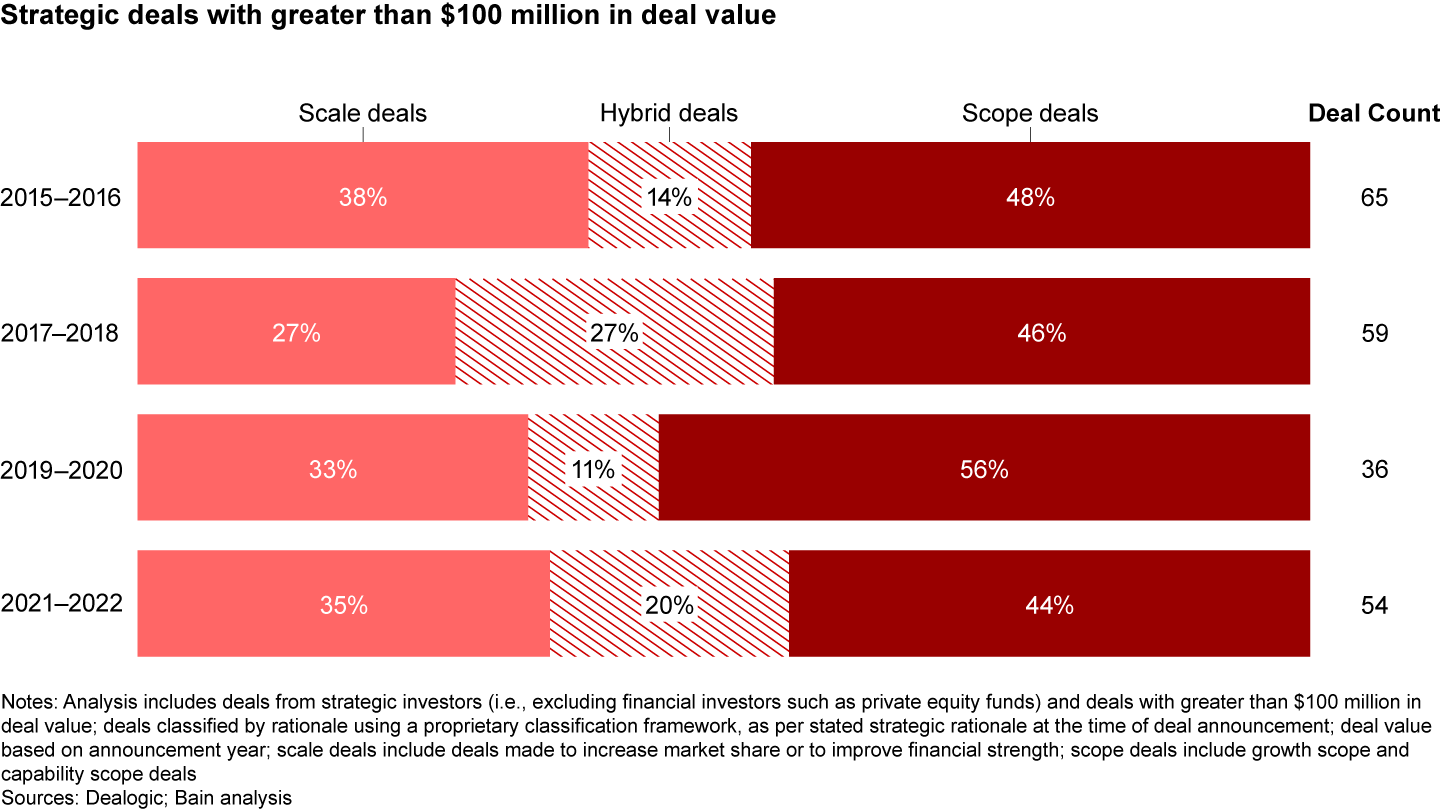
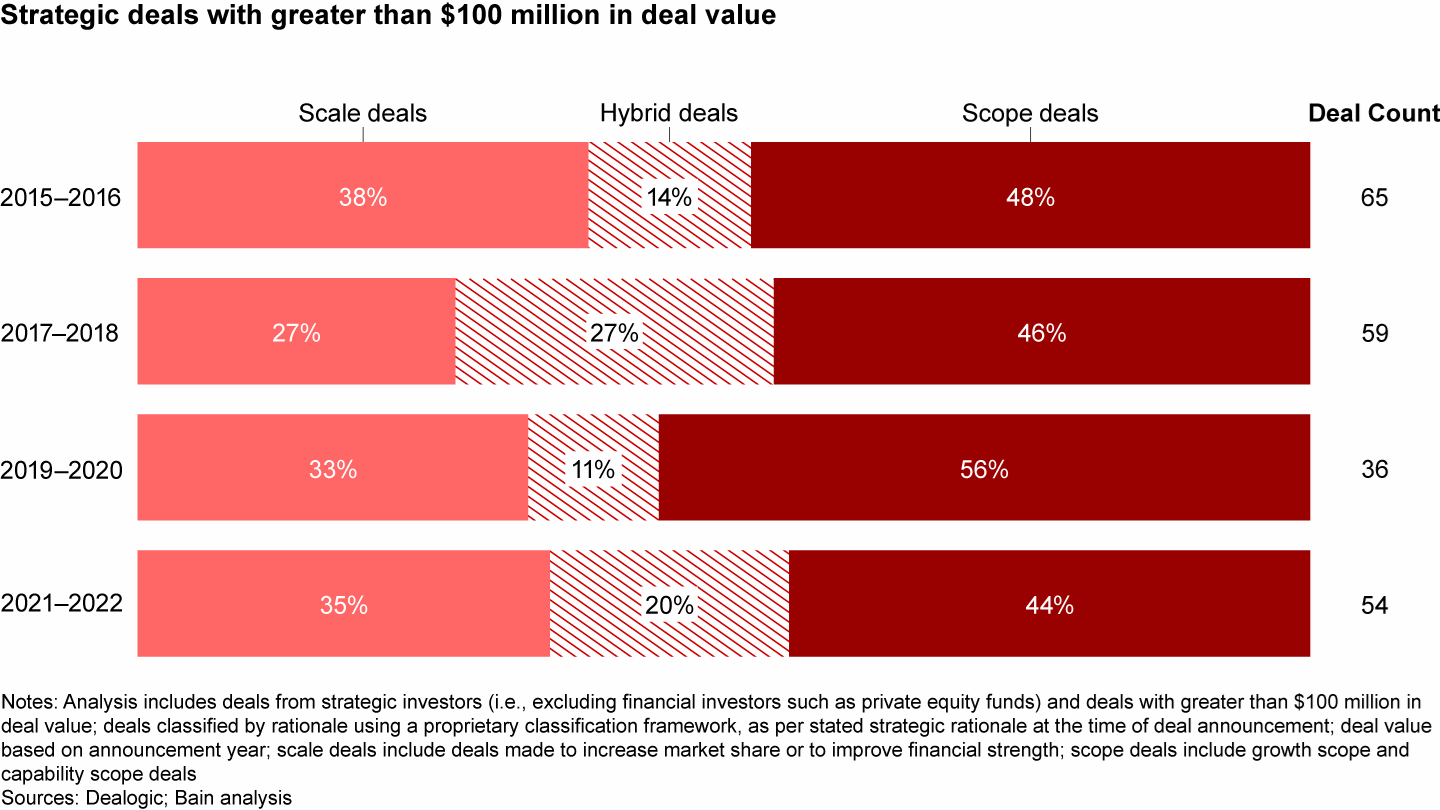
Going forward, scale deals will remain relevant because of ongoing consolidation and the opportunity to fill gaps in geographies, and scope deals will continue to be important because of adjacent opportunities, allowing companies to explore new products.
Lessons learned
Deal success depends first and foremost on the standalone attractiveness of the target, understanding what to integrate vs. leaving as is and how to create a repeatable playbook of value creation.
Three elements in this repeatable playbook that have consistently generated value for top quartile companies include the following (see Figure 4):
- A leading cost position for organic share gain: For example, global packaging and paper company Mondi has an active M&A and integration agenda. After the company made key acquisitions in Eastern Europe to expand its footprint in emerging countries, it was able to reap the operational synergies relatively quickly.
- A profitable portfolio mix combined with a loyal customer base for organic growth: For instance, Fedrigoni further diversifies its portfolio of luxury high-end packaging, where competition is limited and importance of the packaging quality, consistency, and availability is high to the brand and customer. Price is relatively lower in importance, and it is adding further adjacencies such as molded pulp products for luxury applications.
- M&A opportunities such as rollups and other capabilities in the industry: For example, Smurfit Kappa and DS Smith both play in a very regional industry of corrugated packaging. Consequently, over the past years they have added plants to densify their networks.
A successful M&A deal includes one or more of the following
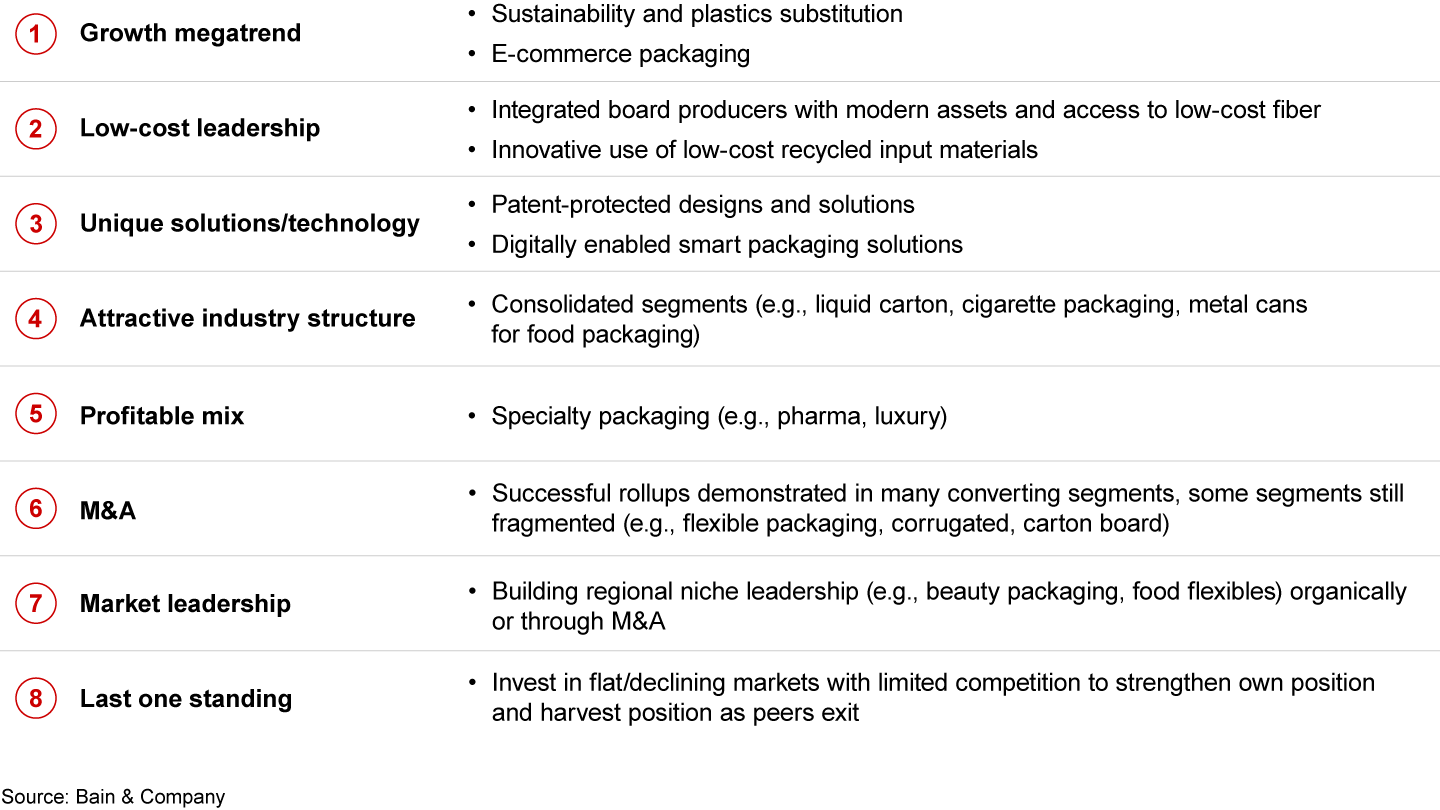
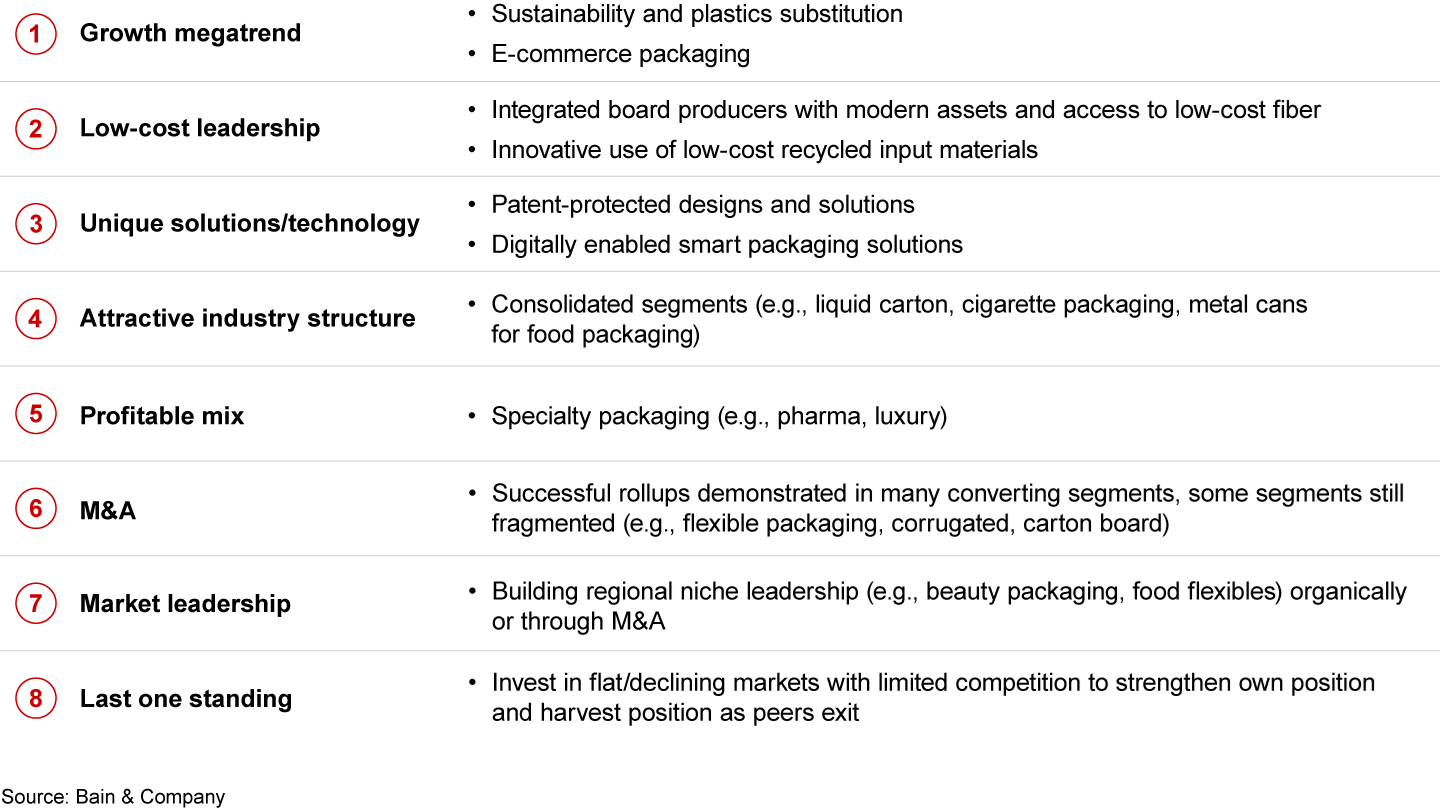
Companies in the top quartile are matching their M&A value creation strategy with their talent strategy, ensuring they have the right executives pulling the appropriate levers in this playbook. These executives have already developed muscles to take down costs (beyond eliminating headcount) as well as find the right deals—whether those are market rollups by larger players or technology-led deals in environmental, social, and corporate governance to acquire new technologies or move into recycling/circularity.
Going forward, the M&A market in paper and packaging will remain attractive and active, driven in large part by resilient end markets as well as the repeatable playbook with which many companies continue to find success.